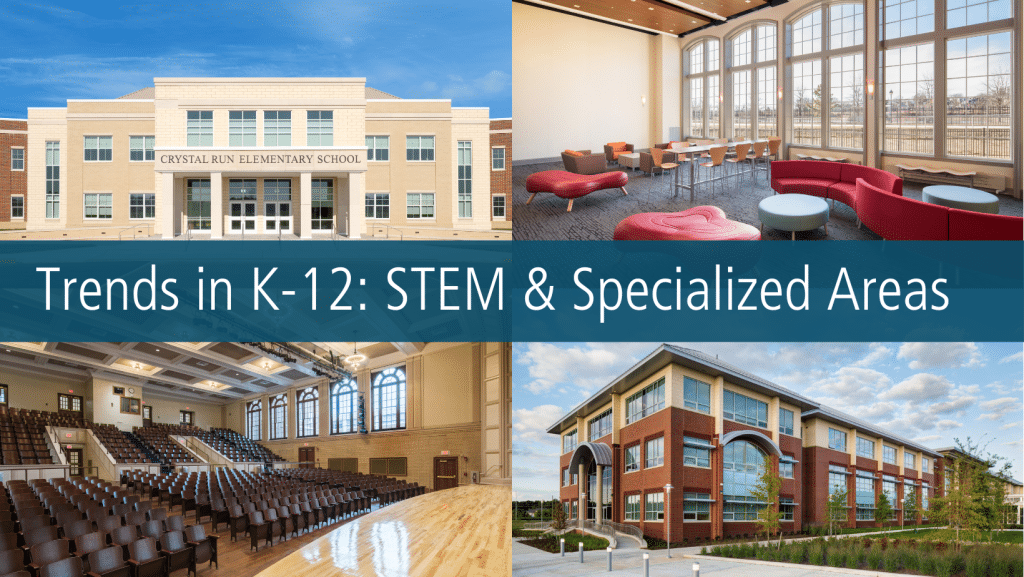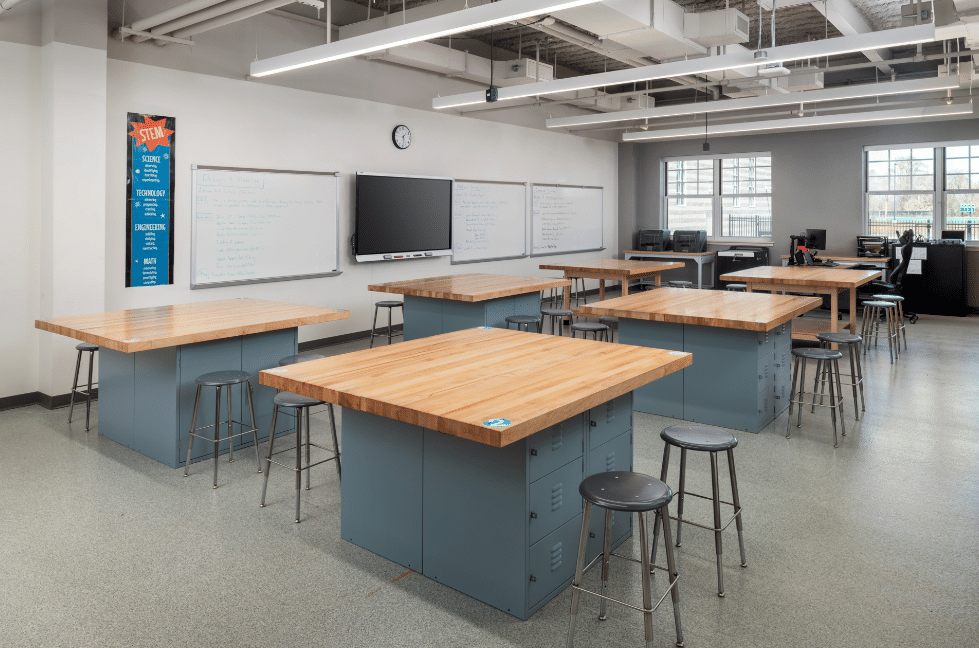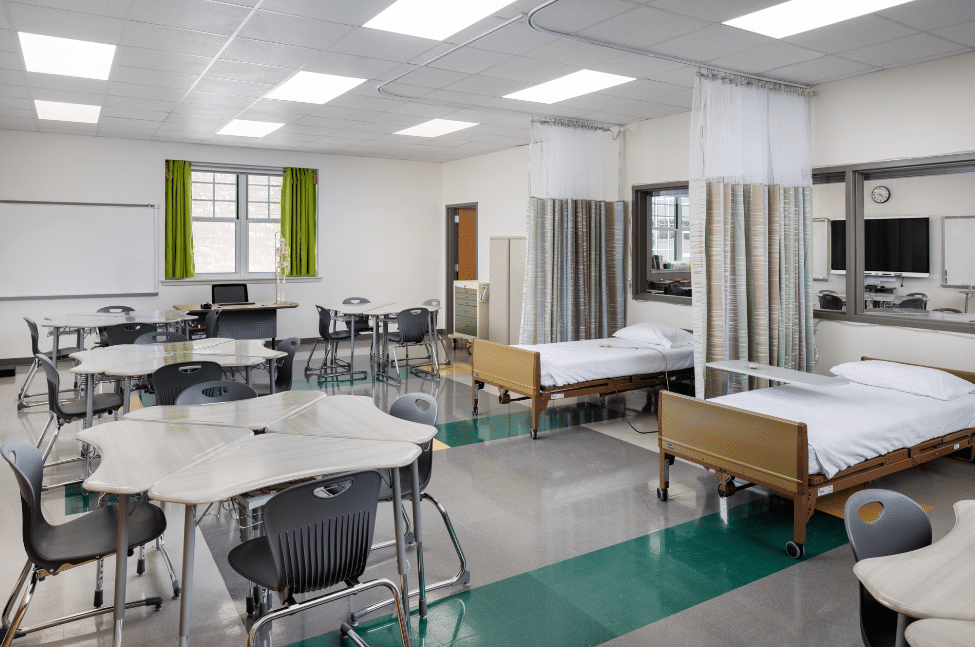Building the Future of K-12 Education: STEM and Specialized Learning Spaces
The landscape of K-12 education is undergoing a remarkable transformation, driven by the growing emphasis on STEM (Science, Technology, Engineering, and Mathematics) and specialized learning spaces. These innovative environments are not just about teaching new content; they’re about fostering a new way of learning and thinking. As construction managers, EDiS Company plays a pivotal role in bringing these dynamic spaces to life, employing advanced construction techniques to create environments that inspire and facilitate modern education.
The Rise of STEM and Specialized Learning Spaces
STEM education has moved to the forefront of the educational agenda, recognized as a key driver of future innovation and economic growth. STEM and specialized learning spaces, designed specifically for STEM education, are essential in providing the hands-on, experiential learning that is crucial for mastering these subjects. These spaces are equipped with state-of-the-art technology and tools, from 3D printers to robotics labs, offering students a platform to explore, experiment, and engage with real-world problems.
Incorporating Construction Techniques in STEM Spaces
The construction of these specialized learning spaces requires a unique approach. At EDiS, we integrate several advanced construction techniques to ensure these environments are not only functional but also inspirational.
1. Modular Construction: Flexibility is key in STEM spaces. Modular construction allows for adaptable learning environments that can evolve with changing educational needs. This technique enables quick and efficient layout changes, accommodating different group sizes and learning styles.
2. Sustainable Building Practices: Sustainability is often a core component of STEM education, and our construction practices reflect this value. We use eco-friendly materials and incorporate energy-efficient systems, creating spaces that are not only conducive to learning but also teach students the importance of environmental stewardship.
3. Advanced Acoustic Design: In spaces where multiple activities occur simultaneously, controlling sound is crucial. We employ advanced acoustic design techniques to ensure that sound is managed effectively, creating an environment conducive to both collaborative projects and individual study.
4. Enhanced Connectivity: In today’s digital age, seamless integration of technology is a must. Our construction includes high-tech infrastructure, ensuring robust internet connectivity and the integration of digital tools, from interactive whiteboards to virtual reality setups.
Space for Collaboration and Innovation
STEM and specialized learning spaces go beyond the simple construction of four-walled spaces; they are about creating an ecosystem that nurtures collaboration and innovation. These spaces encourage teamwork, with open areas for group projects and smaller, private zones for focused research. The layout is intentionally crafted to stimulate creativity and foster interactions that lead to groundbreaking ideas and solutions.
Safety and Accessibility in Construction
Safety and accessibility are paramount in the construction of educational facilities. Our approach ensures that all spaces are safe for hands-on experiments and accessible to every student. We adhere to strict safety standards and incorporate universal design principles, making sure that these learning environments are inclusive and welcoming to all.
The Impact of STEM and Specialized Learning Spaces
The impact of well-designed STEM and specialized learning spaces is profound. They not only enhance the learning experience but also prepare students for future careers in STEM fields. By providing an environment where students can develop critical thinking, problem-solving, and collaboration skills, we are helping to shape the innovators and leaders of tomorrow.
In conclusion, the construction of STEM and specialized learning spaces is a critical component of modern K-12 education. At EDiS Company, we are proud to be at the forefront of this educational revolution, building spaces that not only meet the current demands of STEM education but are also poised to adapt to its future developments. Through our innovative construction techniques and thoughtful design, we are helping to build the future of learning.






